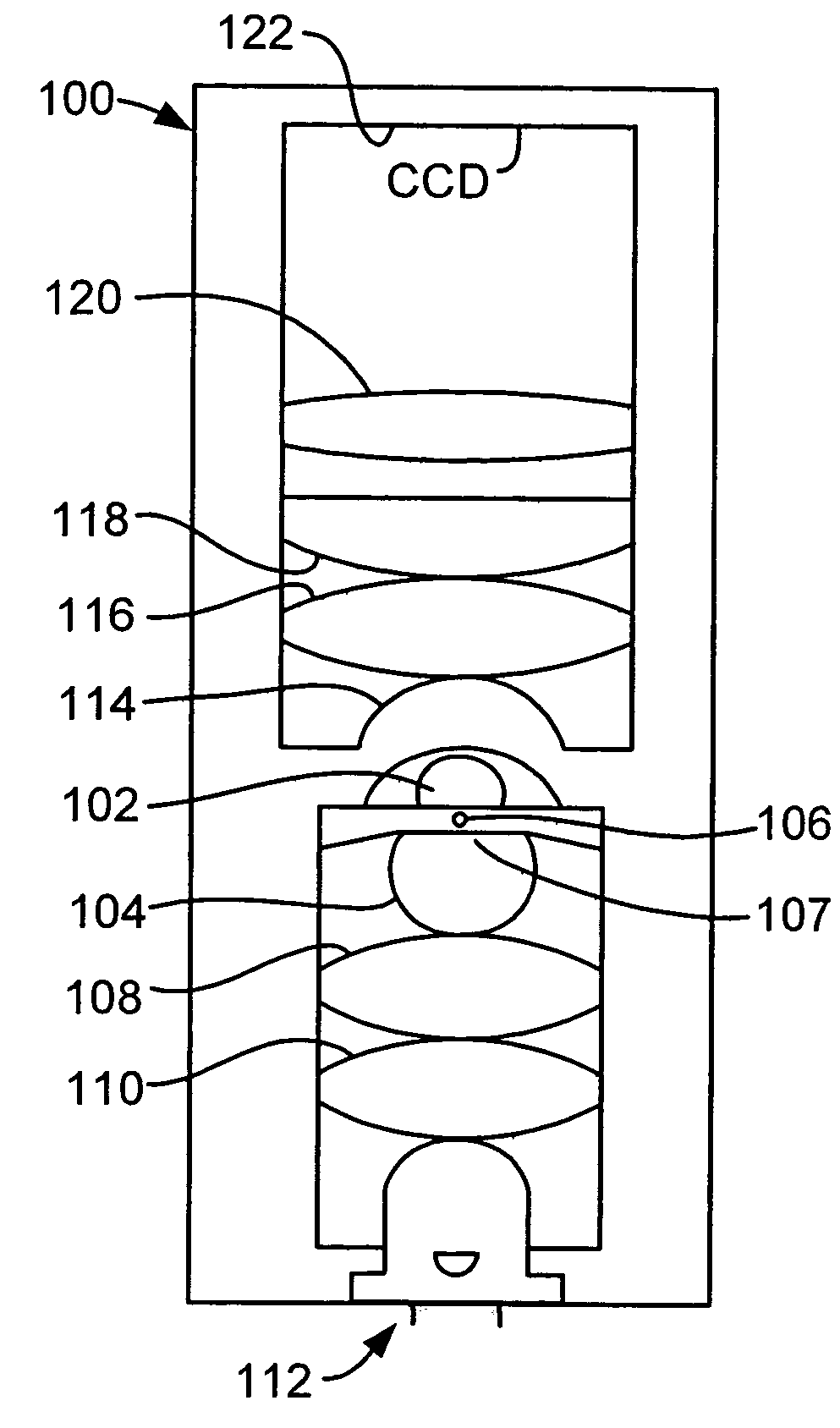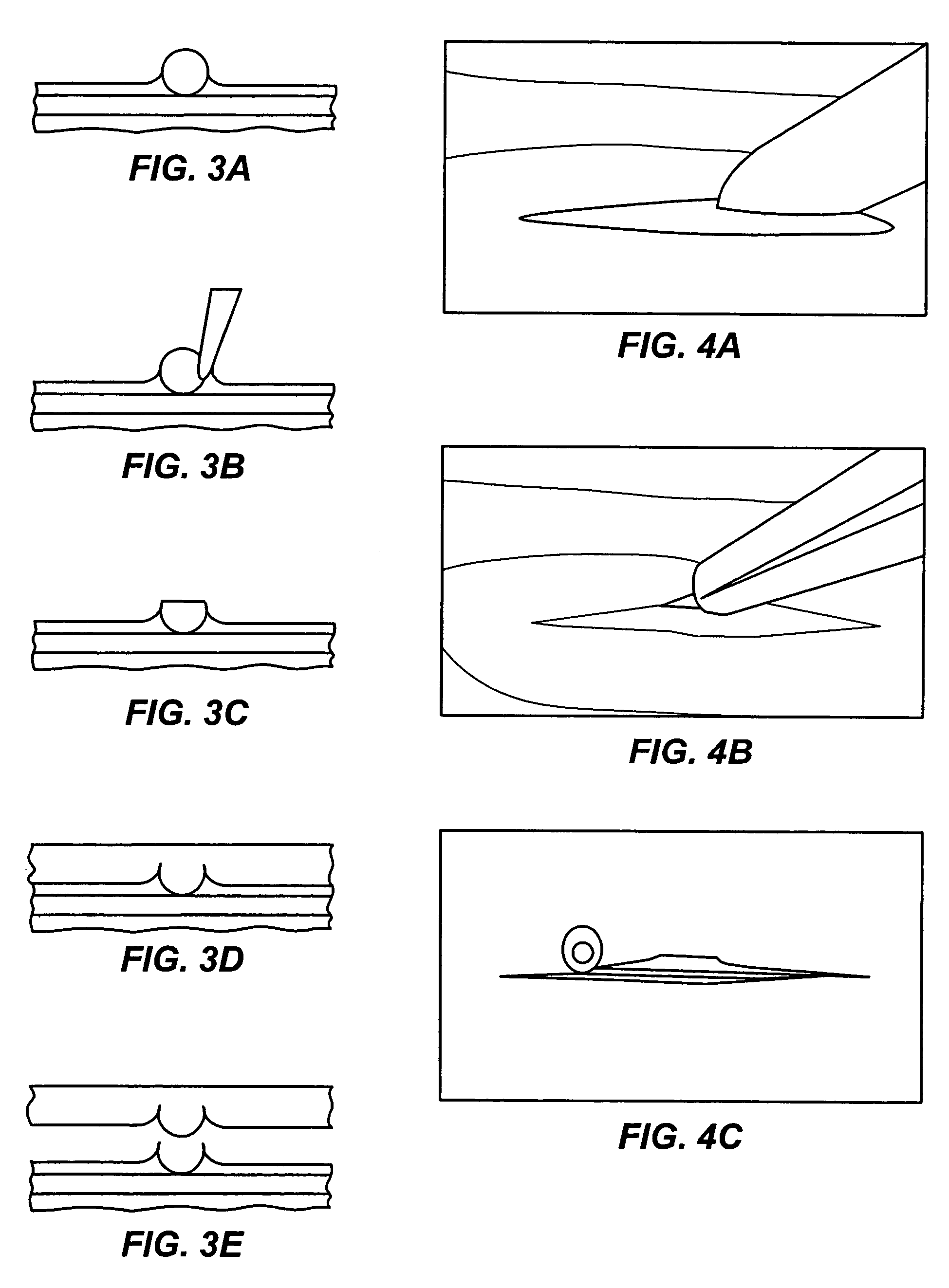Microfabricated rubber microscope using soft solid immersion lenses
a microfabricated, rubber technology, applied in the field of microscopes, can solve the problems of low magnification and spherical aberration of original design, spoilage of numerical aperture gains, and difficulty in manufacturing sils, and achieve the effect of higher light gathering ability
- Summary
- Abstract
- Description
- Claims
- Application Information
AI Technical Summary
Benefits of technology
Problems solved by technology
Method used
Image
Examples
Embodiment Construction
[0025]Using the techniques of soft lithography as disclosed herein, small solid immersion lenses (SILs) suitable for microscopy can be made that range in size from less than 150 microns to 10 millimeters, and such SILs have been made successfully. Referring to FIG. 1, there is shown an image of a 150 micron bead in a mold according to the invention. The mold material wicks up around the bead due to surface tension. However, the height of the mold due to such creep can be accurately correlated to pre-curing of the mold material of interest, such as General Electric RTV or Sylgard PDMS, both of which can also be used as SIL material. This correlation can be used to calibrate mold depth to cooking time.
[0026]FIG. 2B is a graph illustrating the calibration of cooking time at 80° C. for two materials, the top curve 10 being for GE RTV and the bottom curve being for Sylgard PDMS. From this curve, it can be determined that for a mold depth of h=R(1+1 / n), in this case a 150 micron sphere, t...
PUM
| Property | Measurement | Unit |
|---|---|---|
| size | aaaaa | aaaaa |
| size | aaaaa | aaaaa |
| sizes | aaaaa | aaaaa |
Abstract
Description
Claims
Application Information
 Login to View More
Login to View More - R&D
- Intellectual Property
- Life Sciences
- Materials
- Tech Scout
- Unparalleled Data Quality
- Higher Quality Content
- 60% Fewer Hallucinations
Browse by: Latest US Patents, China's latest patents, Technical Efficacy Thesaurus, Application Domain, Technology Topic, Popular Technical Reports.
© 2025 PatSnap. All rights reserved.Legal|Privacy policy|Modern Slavery Act Transparency Statement|Sitemap|About US| Contact US: help@patsnap.com



